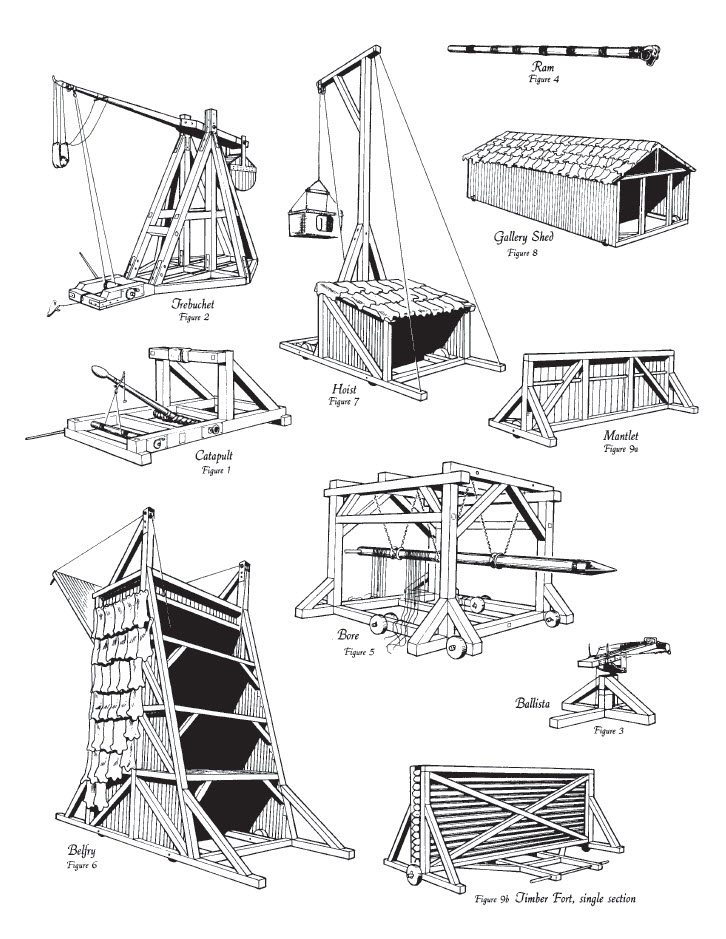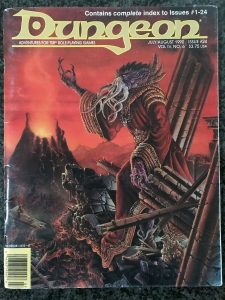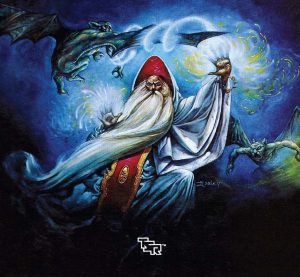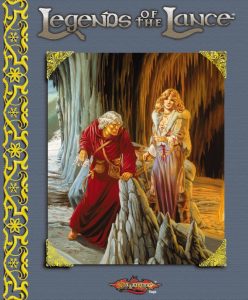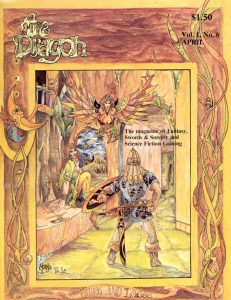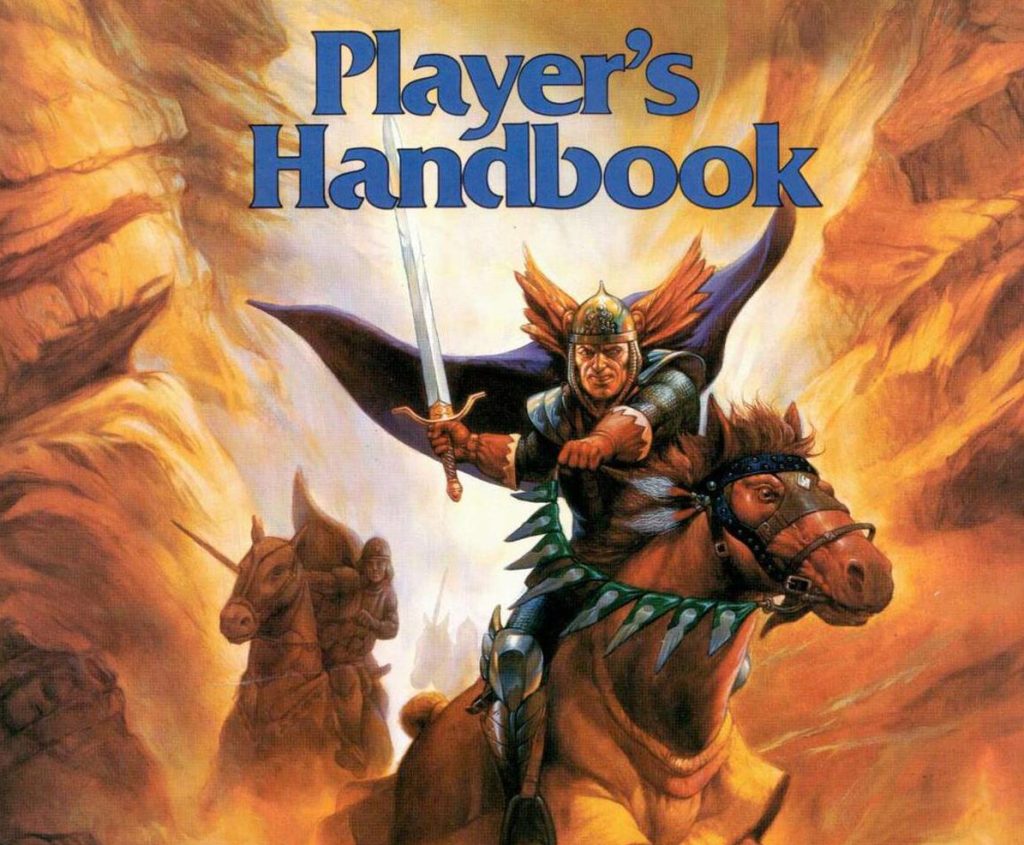
DnD2e-Players-Handbook
This is broken into several sections. First section is quick summary, then followed with more in depth details.
Beginner's Guide to AD&D 2nd Edition
Introduction
Advanced Dungeons & Dragons 2nd Edition (AD&D 2e) is a fantasy role-playing game (RPG) where players create heroes, explore fantastic worlds, and embark on epic quests guided by a Dungeon Master (DM). This guide covers everything a new player needs to begin their adventure.
Basic Terminology
- Player Character (PC): Your in-game persona.
- Non-Player Character (NPC): Characters controlled by the Dungeon Master.
- Dungeon Master (DM): Narrator and referee who manages the game world and story.
- Hit Points (HP): Represent your character's health.
- Armor Class (AC): Determines how difficult your character is to hit; lower AC is better.
- Saving Throw: Roll to resist or reduce effects of magic or danger.
Creating Your Character
Steps:
- Choose a Race: Human, Elf, Dwarf, Halfling, Gnome, Half-Elf.
- Choose a Class: Fighter, Wizard, Cleric, Rogue (Thief), Paladin, Ranger, Bard, Druid.
- Roll Ability Scores: Strength, Dexterity, Constitution, Intelligence, Wisdom, Charisma.
- Scores range from 3 to 18, rolled with 3d6 or alternative methods as instructed by DM.
- Select Proficiencies: Skills and weapon proficiencies.
- Buy Equipment: Weapons, armor, adventuring gear using starting gold.
Combat Basics
Combat is turn-based and occurs in rounds, with each round representing approximately one minute.
Initiative
- Each character rolls 1d10 (lower is better).
- The DM determines turn order.
Attacking and Defending
- Attack Roll: Roll 1d20, add modifiers (Strength or Dexterity, proficiency, magical bonuses).
- Compare total to opponent's Armor Class (AC).
- Equal to or higher than opponent's AC hits.
Damage
- After a successful hit, roll weapon damage dice (e.g., 1d8 for a longsword), add modifiers.
- Deduct damage from enemy's Hit Points (HP).
Armor Class (AC)
- Lower AC is better. Base AC is 10, no armor.
- Armor and shields subtract from AC, making you harder to hit.
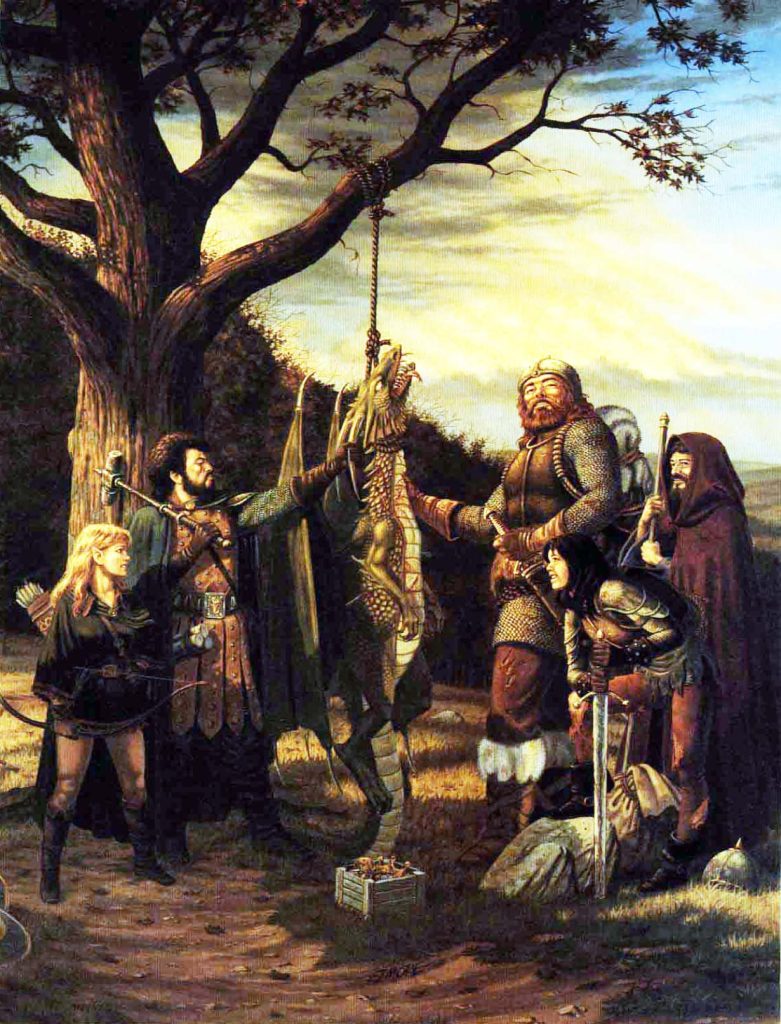
Magic System
Magic is divided into wizardly (arcane) and priestly (divine) magic.
Wizard Magic
- Wizards memorize spells from spellbooks.
- Spells must be memorized daily.
- Casting a memorized spell removes it until you rest and memorize again.
Priest (Cleric/Druid) Magic
- Granted by a deity or nature.
- Clerics choose spells daily from their deity's domain.
- Druids draw power from nature.

Spell Levels and Slots
- Spells range from levels 1 to 9.
- Higher-level spells are more powerful.
- Your class level determines how many spells per day you can memorize and cast.
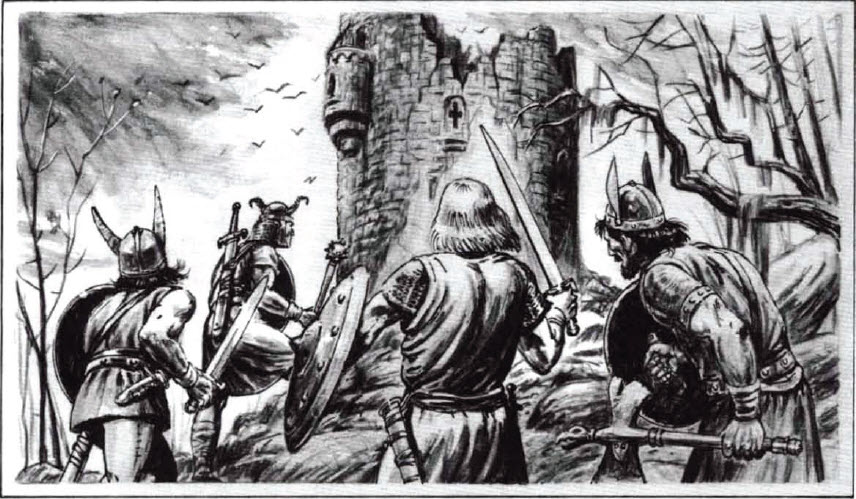
Spellcasting Mechanics
- Select memorized spell and declare casting during your turn.
- Spells may require components: verbal (spoken), somatic (gestures), and material (physical items).
Spell Attacks
- Spells that require attack rolls follow similar rules as weapon attacks (1d20 + modifiers).
Saving Throws
- Targets of spells often roll a saving throw to resist or reduce effects.
- Saving throw types: Paralyzation/Poison/Death Magic, Rod/Staff/Wand, Petrification/Polymorph, Breath Weapon, Spell.
- Roll 1d20 equal or higher than your class-specific saving throw number.
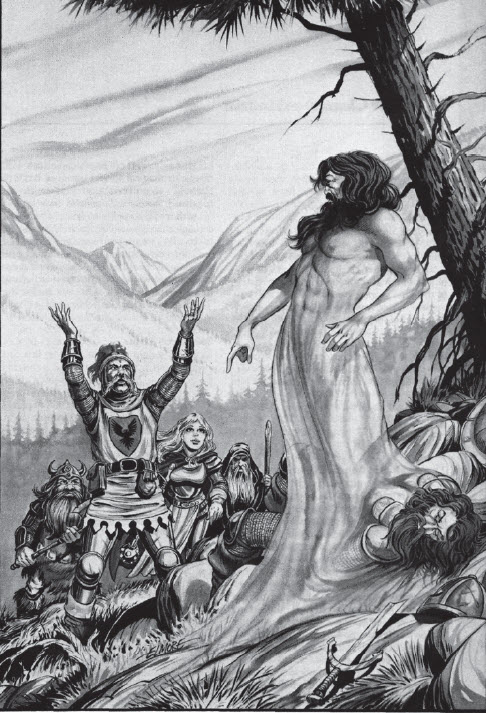
Example of Play
- DM describes situation.
- Players declare actions.
- DM resolves actions by rolls and narrates outcomes.
Role-playing Tips
- Play your character's personality.
- Engage with the story and other characters.
- Cooperate with your party to succeed.
Essential Tools
- Dice set: d4, d6, d8, d10, d12, d20.
- Character sheet.
- Pencil and paper.
The Adventurer's Primer: A Beginner's Guide to the Boundless Realms of AD&D 2nd Edition
Introduction: Step Through the Mists of Legend!
So, you feel the call of adventure echoing from the forgotten corners of the world? Excellent choice, brave seeker! You stand at the precipice of diving into Advanced Dungeons & Dragons 2nd Edition, a classic tabletop role-playing game that has ignited imaginations and woven countless tales of daring heroes, cunning rogues, and potent magic since the mists of 1989. More than just rules and dice, AD&D 2nd Edition is a gateway to collaborative storytelling, where you and your friends will forge unforgettable sagas of heroism, intrigue, and triumph over the forces of darkness. This guide will illuminate the fundamental mechanics of this richly detailed game, with a keen focus on the thrill of combat, the mysteries of magic, and other essential elements that bring your adventures to life. Prepare to unleash your imagination and embark on journeys beyond your wildest dreams!
What is AD&D 2nd Edition? A Stage for Shared Stories
At its heart, AD&D 2nd Edition is a fantasy role-playing game. This means you and your companions will take on the roles of unique characters, each with their own abilities, motivations, and destinies. Together, you'll navigate perilous landscapes, interact with fascinating (and sometimes dangerous) inhabitants, solve ancient riddles, and face formidable foes. One player among you will assume the crucial role of the Dungeon Master (DM). Think of the DM as the architect of your adventures, the narrator of the world, the voice of every creature and character you meet, and the impartial referee who guides the game's flow. The rest of you will embody individual heroes, making crucial decisions, rolling the dice to determine the outcomes of your actions, and working as a fellowship to overcome the myriad challenges that lie ahead. Your collective imagination is the only limit to the stories you can create!
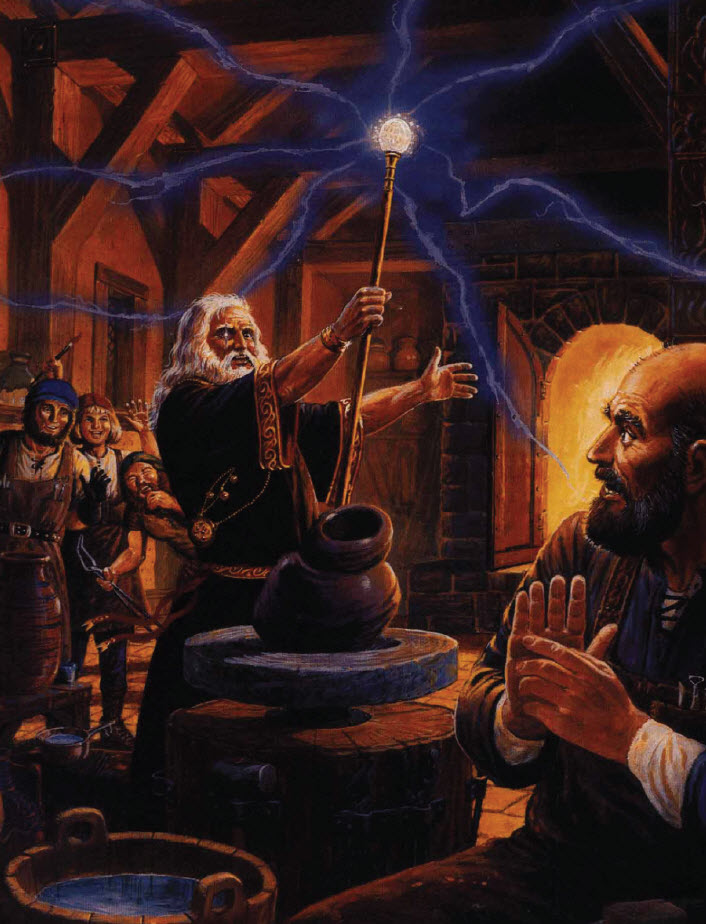
Character Creation: Breathing Life into Your Hero
Before your hero can stand against a rampaging ogre or decipher the secrets of a forgotten tome, you must first bring them into being. This is the exciting process of character creation:
Step 1: Rolling the Seeds of Destiny - Ability Scores
Your character's core abilities represent their innate potential and define their strengths and weaknesses. There are six primary abilities:
- Strength (STR): Raw physical power, crucial for melee combat, lifting heavy objects, and feats of brute force. Imagine the brawny warrior cleaving through enemy ranks or the struggling scholar attempting to move a heavy stone door.
- Dexterity (DEX): Agility, reflexes, balance, and nimbleness. Essential for dodging attacks, firing a bow with precision, and picking locks with a delicate touch. Picture the lithe elf nimbly avoiding a trap or the swift rogue slipping through shadows.
- Constitution (CON): Health, stamina, endurance, and resilience against disease and poison. A high Constitution represents a hardy character who can withstand hardship and shrug off injuries. Think of the stalwart dwarf enduring harsh conditions or the frail wizard succumbing quickly to illness.
- Intelligence (INT): Knowledge, memory, reasoning, and the capacity for learning. Vital for wizards studying arcane lore, and useful for any character who needs to solve puzzles or recall important information. Envision the wise sage unraveling an ancient prophecy or the dim-witted brute struggling with a simple lock.
- Wisdom (WIS): Perception, intuition, common sense, and willpower. Important for clerics and druids who draw upon divine or natural powers, and helpful for anyone who needs to make insightful judgments or resist mental manipulation. Picture the perceptive ranger noticing hidden tracks or the naive fool easily falling prey to deception.
- Charisma (CHA): Personality, leadership, persuasiveness, and the ability to influence others. Crucial for bards charming audiences, paladins inspiring their allies, and anyone who needs to negotiate or command respect. Imagine the charismatic leader rallying their troops or the repulsive villain struggling to gain followers.
To determine these scores, you'll typically roll 3d6 (three six-sided dice) for each ability in order. However, your DM might introduce alternative methods, such as rolling 4d6 and dropping the lowest die for a slightly higher average. These initial rolls lay the foundation for your character's capabilities.
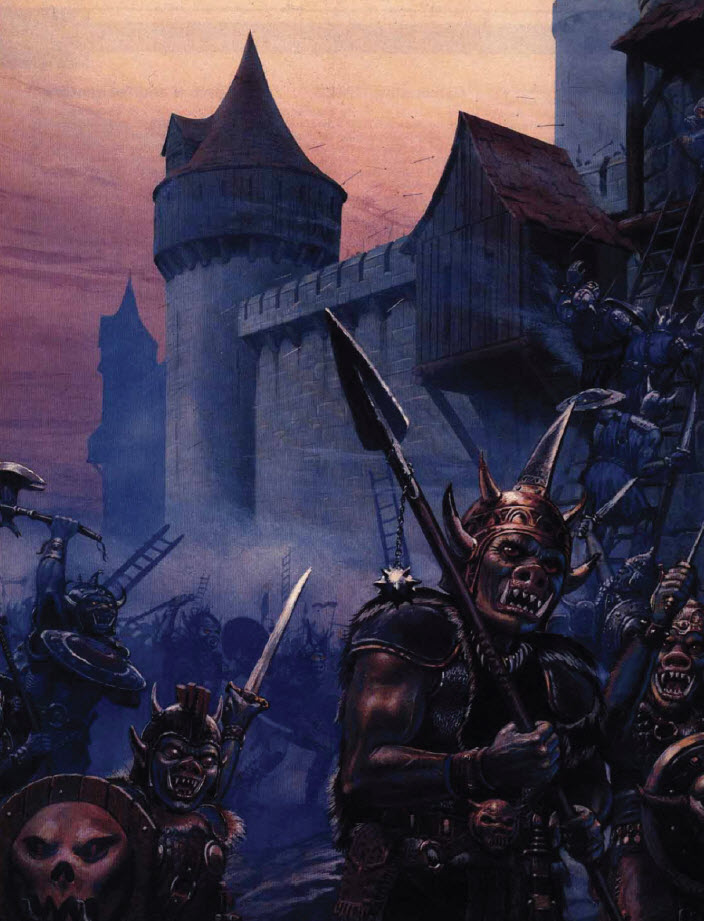
Step 2: Choosing Your Heritage - Race
Next, you'll select your character's race, representing their ancestry and inherent traits. The core races in AD&D 2nd Edition offer distinct advantages and disadvantages:
- Human: The most versatile and adaptable of the common races, humans have no inherent level limits in any class and often receive bonus proficiency slots, reflecting their capacity to learn a wide range of skills. They are the common thread that weaves through many different cultures and societies.
- Elf: Graceful and long-lived, elves possess an innate connection to magic and the natural world. They gain bonuses to DEX and penalties to CON, making them agile and perceptive but somewhat physically frail. Many elves possess infravision, allowing them to see in the dark. They also have a natural resistance to sleep and charm magic.
- Dwarf: Stout, hardy, and deeply connected to the earth, dwarves are renowned for their craftsmanship and stubborn resilience. They gain bonuses to CON and penalties to CHA, making them tough and enduring but often gruff and less charismatic. Dwarves also have infravision, a bonus to saving throws against poison and magical devices, and a knack for detecting traps and secret doors in stonework.
- Halfling: Small, nimble, and surprisingly resilient, halflings are known for their love of comfort and their talent for remaining unseen. They gain bonuses to DEX and penalties to STR, making them agile and stealthy but physically weaker. Halflings receive bonuses to saving throws against fear and poison and are often excellent thieves.
- Gnome: Clever, inquisitive, and often whimsical, gnomes are masters of illusion and possess a natural curiosity about the world. They gain bonuses to INT and penalties to WIS, making them intelligent and inventive but sometimes lacking in common sense. Gnomes have infravision and a bonus to saving throws against illusions.
- Half-Elf: Bridging the gap between humans and elves, half-elves inherit some of the best traits of both races. They possess human adaptability and elven grace, often excelling in a variety of roles. They have infravision and a resistance to sleep and charm magic.
Each race comes with unique abilities, cultural tendencies, and often different societal roles within the game world. Consider how your chosen race might influence your character's background and personality.
Step 3: Defining Your Calling - Class
Your character's class represents their profession, their primary skills, and their role within an adventuring party:
- Fighter: Masters of combat, skilled in a wide array of weapons and armor. They are the backbone of many adventuring groups, capable of dealing and withstanding significant damage.
- Ranger: Skilled wilderness warriors, at home in the wilds. They often have knowledge of tracking, hunting, and the natural world, and some possess limited spellcasting abilities later in their careers.
- Paladin: Holy warriors dedicated to a deity and the cause of good. They possess martial prowess combined with divine powers, such as healing and protection, and often adhere to a strict code of conduct.
- Wizard: Arcane spellcasters who manipulate the very fabric of magic through study and intellect. They wield powerful spells to attack enemies, control the battlefield, and unravel mysteries.
- Cleric: Divine spellcasters who draw their power from a deity or higher power. They are often healers and protectors, wielding spells to mend wounds, ward off evil, and bolster their allies.
- Druid: Priests of the natural world, drawing their power from the elements and the cycles of life and death. They can shapeshift into animals, command the forces of nature, and cast spells related to the wilderness.
- Thief/Rogue: Skilled in stealth, trickery, and a variety of illicit arts. They excel at picking locks, disarming traps, moving silently, and gathering information.
- Bard: Versatile performers and loremasters, bards combine musical talent with a smattering of magic and a wide range of skills. They can inspire their allies, charm their foes, and possess a wealth of knowledge.
Each class has minimum ability score requirements that your character must meet to choose that profession. For example, a character might need a minimum Strength score to become a fighter or a minimum Intelligence score to become a wizard.
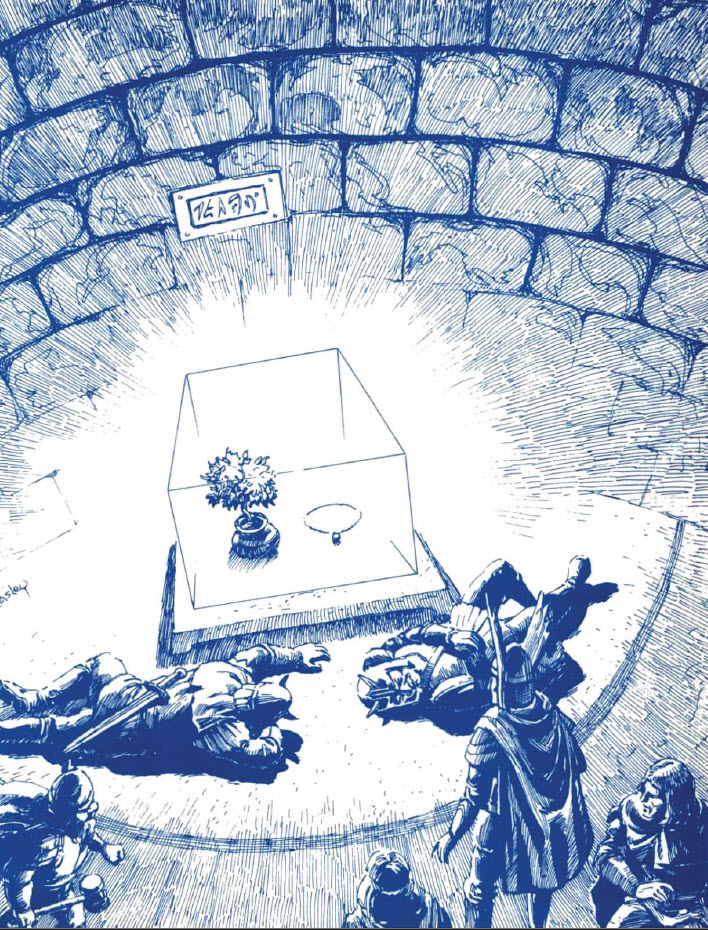
Step 4: Calculating Your Potential - Derived Statistics
Based on your race and class, you'll determine several important derived statistics:
- Hit Points (HP): Represent your character's ability to withstand damage. The number of hit points you start with is determined by your class (fighters typically have higher hit points than wizards, for example, using dice like a d10 for fighters and a d4 for wizards). You'll roll this die (or a multiple of it) at character creation.
- THAC0 (To Hit Armor Class 0): This is your base combat proficiency, representing the die roll needed on a d20 to hit an opponent with an Armor Class of 0. Remember, in AD&D 2nd Edition, lower THAC0 is better, as you need a lower number to hit higher Armor Classes.
- Saving Throws: These represent your character's resistance to various harmful effects, such as poison, magic, or dragon breath. You'll have a set of saving throw values based on your class and level, which you'll roll against when faced with danger.
- Armor Class (AC): This represents how difficult your character is to hit in combat. Lower Armor Class is better, indicating greater protection. Your base AC is often 10 (unarmored), and it improves (decreases) with the armor you wear and sometimes with your Dexterity.
Step 5: Equipping for Adventure - Selecting Gear
With your abilities and class defined, you'll receive a starting amount of gold to purchase essential equipment. This includes weapons to defend yourself, armor to protect against attacks, and adventuring gear like ropes, torches, and rations to aid your journey. Be mindful that certain classes have restrictions on the types of weapons and armor they can use. A heavily armored paladin is a common sight, while a nimble thief might prefer lighter leathers for better mobility.

The Dance of Blades and Blows: Combat System Explained
Now for the moment of truth - when steel clashes, spells fly, and heroes face down the forces of evil! Here's how combat typically unfolds:
Initiative: Determining the Flow of Battle
Combat is divided into rounds, each representing approximately one minute of frantic in-game action. At the start of each round:
- Everyone involved in the combat rolls a 1d10 to determine their initiative.
- The character with the lowest initiative roll acts first. Yes, you read that right - lower is quicker in AD&D 2nd Edition!
- Modifiers from your Dexterity score or certain spells and abilities can be added to your initiative roll, making some characters naturally faster than others.
This initiative roll dictates the order in which characters and monsters take their actions within that round.
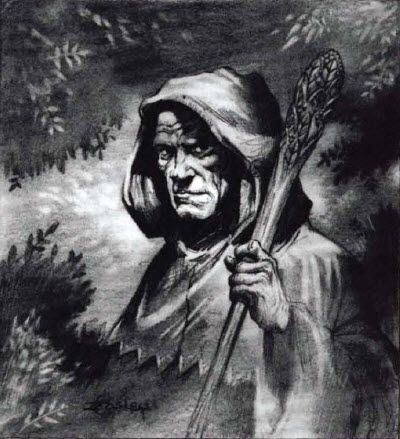
The Attack Roll: Aiming for Victory
When your character attempts to strike an opponent, follow these steps:
- Roll a 1d20. This is your attack roll.
- Add any relevant modifiers to this roll. This might include your Strength bonus for melee attacks or your Dexterity bonus for ranged attacks. Certain magical weapons or abilities can also grant attack roll bonuses.
- Compare the result to your character's THAC0.
- Subtract your modified attack roll from your THAC0. The resulting number is the Armor Class (AC) that you successfully hit or anything lower.
A fighter with a THAC0 of 16 attacks a goblin with AC 2. They roll a 12 on a d20 and add a +2 Strength bonus, for a total of 14. Subtract that from their THAC0 (16 - 14 = 2), and they can hit any creature with AC 2 or higher. Since the goblin's AC is exactly 2, the attack hits! Just remember: lower AC is harder to hit, and THAC0 minus your total attack roll tells you the lowest AC you can successfully strike.
And when I said "hit any creature with AC 2 or higher" the higher is literally, 3, 4, 5 etc. Remember AC 10 is no armor (think farmer, bartender, etc.), while AC 3 is plate mail, but armor class is more than just armor, or toughness, it can be dexterity, ability to minimize a blow, know how to roll off an attack, etc.
Damage: The Impact of Your Blow
If your attack roll is successful, you now determine the amount of damage you inflict:
- Roll the damage die indicated by your weapon:
- Dagger: 1d4
- Short sword: 1d6
- Long sword: 1d8
- Two-handed sword: 1d10
- Add any relevant damage bonuses. Your Strength bonus is often added to melee damage, representing the force of your blow. Certain magical weapons may also grant damage bonuses.
The total rolled is the number of hit points your opponent loses. When a creature's hit points reach 0, they are typically defeated.
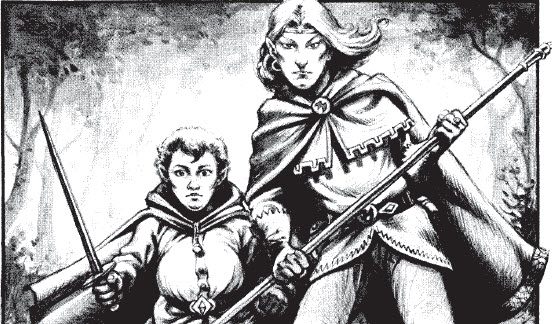
Armor Class: Your Line of Defense
Armor is crucial for protecting your character from incoming attacks:
- The base Armor Class for an unarmored character is typically 10.
- Different types of armor provide varying levels of protection, lowering your Armor Class and making you harder to hit:
- Leather armor: AC 8
- Chain mail: AC 5
- Plate mail: AC 3
- A shield can further improve your AC, often by +1 (making your AC one point lower).
- Your character's Dexterity score can also provide a bonus to your Armor Class, as nimbler characters are harder to strike.
Unleashing the Arcane and Divine: The Magic System
Magic in AD&D 2nd Edition is a potent force, wielded by those who study the arcane arts or are granted power by divine beings or the forces of nature. It primarily falls into two distinct categories.
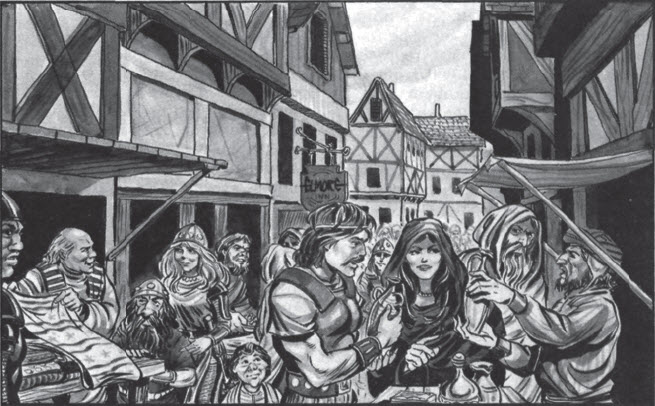
Wizard Magic: The Art of Shaping Reality
Wizards are scholars of the arcane, meticulously learning and manipulating magical energies. Their spellcasting process involves:
- Finding and Researching Spells: Wizards must uncover magical knowledge through ancient texts, forgotten scrolls, or tutelage from other mages.
- Recording Spells in Spellbooks: Once learned, spells are painstakingly transcribed into a wizard's personal spellbook, a valuable repository of arcane formulas.
- Memorizing Spells Daily: Before casting, a wizard must spend time each day committing specific spells to memory, drawing upon their understanding of the arcane energies. They have a limited number of spell slots per day, determined by their level.
- Casting Memorized Spells: Once cast, a memorized spell is typically forgotten until the wizard prepares it again. This requires careful planning of their daily spell selection.
New wizards begin with a very limited repertoire of spells but can expand their knowledge by discovering new spells during their adventures.

Wizards of the Eight Schools: A Guide to Specialist Mages
While many arcane spellcasters in AD&D 2nd Edition are general wizards (sometimes called mages), mastering a broad spectrum of magical arts, some choose to focus their studies on a particular school of magic. These specialists gain deeper insight into their chosen field at the cost of limited understanding of opposing magical disciplines. This system of specialization creates wizards with distinctive capabilities, philosophies, and approaches to solving problems.
The Path to Specialization
Becoming a specialist wizard isn't simply a matter of preference - it requires specific aptitudes and dedicated study. Here's what a character needs to specialize:
- Ability Score Requirements: Each specialist school requires minimum ability scores beyond those needed for general wizardry:
- All specialists need a minimum Intelligence of 9 (as do all wizards)
- Most specialists need a minimum score of 15 in Intelligence
- Some specialists have additional ability requirements (for example, Diviners need Wisdom 16+)
- Early Decision: A character must choose specialization during character creation. Unlike some skills that can be learned later in an adventuring career, magical specialization represents formative training that shapes how a wizard fundamentally understands and interacts with arcane energies.
- Finding a Mentor: The Player's Handbook implies (though doesn't strictly require) that novice specialists typically learn from established masters of their school. This can be an interesting background element for your character.
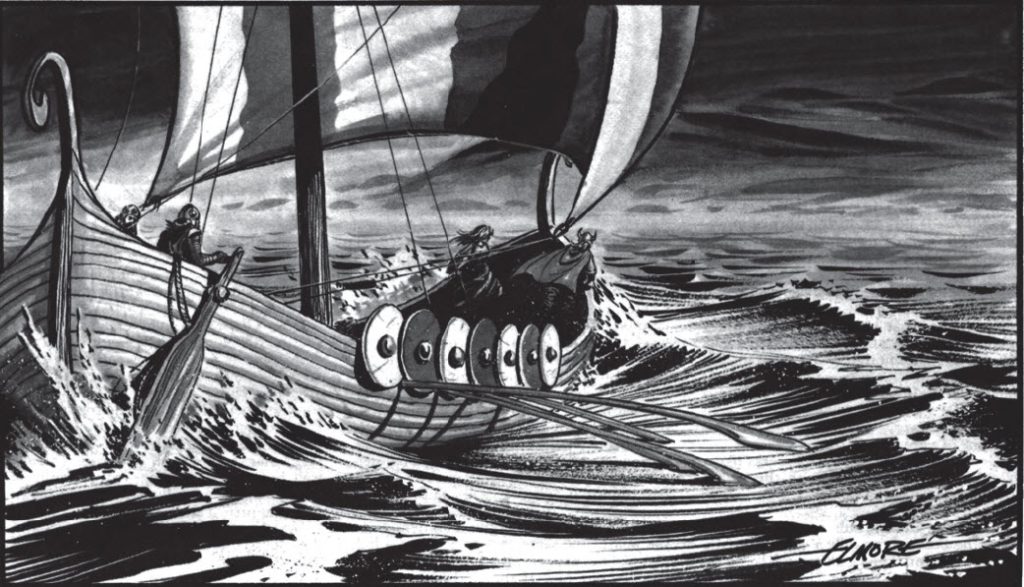
The Eight Schools of Magic
Each of the eight schools governs different types of spells and embodies distinct magical philosophies:
1. Abjuration (Abjurer)
School Focus: Protective and banishing magic that creates barriers, dispels effects, and wards against harm.
Notable Spells: Shield, Dispel Magic, Anti-Magic Shell, Protection from Evil
Personality Tendencies: Abjurers are often cautious and defensive by nature. They plan carefully and prefer to neutralize threats rather than overwhelm them. Many value security and stability above all else.
Required Abilities: Intelligence 15, Constitution 15
Opposition Schools: Alteration, Illusion
2. Alteration/Transmutation (Transmuter)
School Focus: Magic that changes properties of objects and creatures, transforms matter, and manipulates natural laws.
Notable Spells: Enlarge, Polymorph Self, Disintegrate, Shape Change
Personality Tendencies: Transmuters often embrace change and possibility. They tend to be adaptable and creative problem-solvers, frequently experimenting with new forms and compositions.
Required Abilities: Intelligence 15, Dexterity 15
Opposition Schools: Abjuration, Necromancy
3. Conjuration/Summoning (Conjurer)
School Focus: Magic that brings creatures or objects from elsewhere, creates materials from nothing, and enables teleportation.
Notable Spells: Summon Monster, Create Food and Water, Conjure Elemental, Gate
Personality Tendencies: Conjurers are often resourceful and commanding. They prefer to call upon outside forces to solve problems rather than handling situations directly.
Required Abilities: Intelligence 15, Constitution 15
Opposition Schools: Divination, Invocation/Evocation

4. Divination (Diviner)
School Focus: Magic that reveals information, detects magic, locates objects, and glimpses the future.
Notable Spells: Detect Magic, Identify, Clairvoyance, True Seeing
Personality Tendencies: Diviners typically value knowledge and foresight. They can be contemplative, cautious, and thoughtful, preferring to understand a situation fully before acting.
Required Abilities: Intelligence 15, Wisdom 16
Opposition Schools: Conjuration
5. Enchantment/Charm (Enchanter)
School Focus: Magic that influences minds, controls emotions, and binds creatures to the caster's will.
Notable Spells: Charm Person, Suggestion, Emotion, Mass Charm
Personality Tendencies: Enchanters are often charismatic and socially adept. They may prefer manipulation and persuasion to direct confrontation, seeing force as a crude last resort.
Required Abilities: Intelligence 15, Charisma 16
Opposition Schools: Invocation/Evocation, Necromancy
6. Illusion/Phantasm (Illusionist)
School Focus: Magic that creates deceptive sensory effects, phantom images, and manipulates perception.
Notable Spells: Color Spray, Invisibility, Phantasmal Force, Improved Phantasmal Force
Personality Tendencies: Illusionists often have creative, imaginative minds. They may approach problems indirectly, preferring deception and misdirection to direct approaches.
Required Abilities: Intelligence 15, Dexterity 16
Opposition Schools: Necromancy, Invocation/Evocation, Abjuration

7. Invocation/Evocation (Invoker)
School Focus: Magic that harnesses raw elemental energy and force for direct effects, often damage.
Notable Spells: Magic Missile, Fireball, Lightning Bolt, Meteor Swarm
Personality Tendencies: Invokers tend to be direct and sometimes aggressive. They often believe in addressing problems with immediate, powerful solutions rather than subtle approaches.
Required Abilities: Intelligence 15, Constitution 16
Opposition Schools: Conjuration, Enchantment
8. Necromancy (Necromancer)
School Focus: Magic that manipulates life force and death energy, controls undead, and drains vitality.
Notable Spells: Chill Touch, Animate Dead, Enervation, Energy Drain
Personality Tendencies: Necromancers are often pragmatic and unorthodox. They may see conventional morality as a limitation and take a clinical approach to life and death.
Required Abilities: Intelligence 15, Wisdom 15
Opposition Schools: Alteration, Illusion, Enchantment
Benefits of Specialization
Choosing a specialist path grants several significant advantages:
- Expanded Spell Capacity: Specialists can memorize one additional spell per spell level from their chosen school. This effectively increases their daily casting potential.
- Research Advantage: When researching new spells within their specialty, specialists enjoy a 15% reduction in time and costs.
- Learning Bonus: Specialists have a +15% bonus to learn spells from their chosen school.
- Saving Throw Bonus: Specialists gain a +1 bonus to saving throws against spells from their own school.
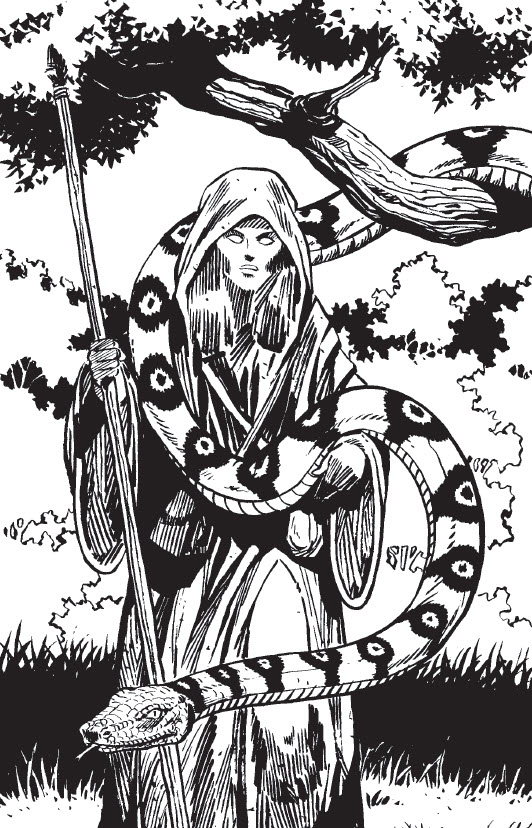
Limitations of Specialization
These benefits come with substantial restrictions:
- Forbidden Schools: The most significant limitation is that specialists cannot learn or cast spells from their opposition schools. This creates meaningful gaps in their magical capabilities.
- Limited Versatility: While specialists excel in one area, they lack the adaptability of a general mage who can potentially learn spells from all schools.
- Higher Entry Requirements: The ability score requirements for specialists are more demanding than for general wizards.
Changing Specialization
The rules of AD&D 2nd Edition generally do not support changing one's school of specialization after character creation. The specialized training represents years of focused study and fundamental understanding of how magic works. Changing specializations would essentially require "unlearning" one approach and beginning from scratch with another.
If a DM chooses to allow such a transition, they might reasonably require:
- A substantial investment of time (perhaps years of in-game time)
- Significant expense for new training and materials
- Starting at a substantially lower level in the new specialization
- A compelling in-game reason or quest
However, most campaigns treat specialization as a permanent choice that defines a wizard's career.

Cleric and Druid Magic: Gifts of Faith and Nature
Divine spellcasters draw their power from higher sources: deities for clerics and the primal forces of nature for druids. Their spellcasting differs from that of wizards:
- Access to All Spells of Their Level: Unlike wizards, divine casters have access to all the spells of levels they can currently cast.
- Praying for Spells Daily: Instead of memorizing specific spells from a book, clerics pray to their deity, and druids commune with nature to receive the spells they will be able to cast that day. They also have a limited number of spell slots based on their level.
- Preparing Spells: Divine casters prepare a selection of spells from their available repertoire each day during their prayers or communion. Once cast, these prepared spells are typically expended until they are prepared again.
Clerical magic often focuses on healing, protection, and divine intervention, while druidic magic emphasizes control over the elements, communication with animals, and the power of the natural world.
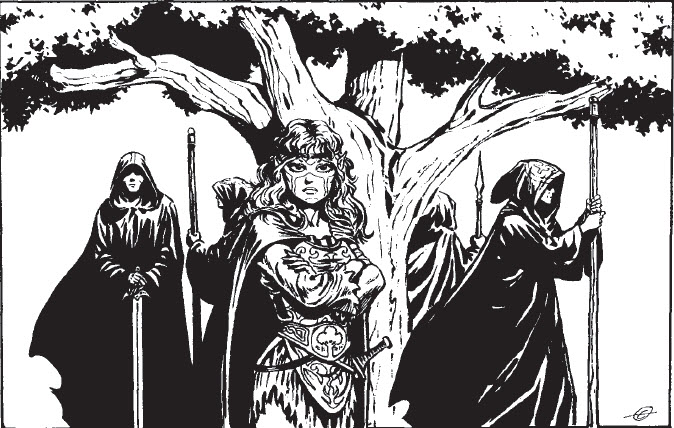
Unleashing the Power of Faith and Nature: The Magic System (Revised)
Magic in AD&D 2nd Edition flows from different sources, shaping the spells available to those who wield it. We've already touched on arcane magic used by Wizards. Now, let's delve into the divine magic wielded by Clerics and Druids. Their power comes not from study of arcane formulas, but from a connection to their deities (for Clerics) or the primal forces of nature (for Druids).
A key concept that distinguishes divine magic in AD&D 2nd Edition is that of Spheres of Influence. Think of these spheres as broad categories of magical power. There are sixteen such spheres, encompassing areas like Healing, Protection, the Elements, Animals, Plants, and more.
Cleric and Druid Magic: Guided by Faith and Nature's Embrace
Unlike Wizards who learn specific spells, Clerics and Druids have access to spells based on their spheres of influence. Each divine caster has either major or minor access to these spheres:
- Major Access: With major access to a sphere, a Cleric or Druid can eventually learn and cast all spells within that sphere, provided they are of a spell level the character can currently cast.
- Minor Access: With minor access, a divine caster is limited to casting only 1st, 2nd, and 3rd-level spells from that particular sphere.
It's important to note that no single Cleric or Druid can access every sphere. Their deity or their connection to nature dictates which spheres are open to them.
Here's a general overview of their typical sphere access:
- Clerics: Generally have major access to spheres like Combat, Divination, Healing, Protection, and Wards. They typically have minor access to the Animal, Elemental (limited to Earth for some), Plant, and Weather spheres. This reflects their role as protectors, healers, and intermediaries of their faith.
- Druids: Have a strong connection to the natural world and typically have major access to the Animal, Elemental, Plant, and Weather spheres, as well as the Healing and All spheres. They often have minor access to the Divination sphere. This reflects their role as guardians and priests of the natural world.
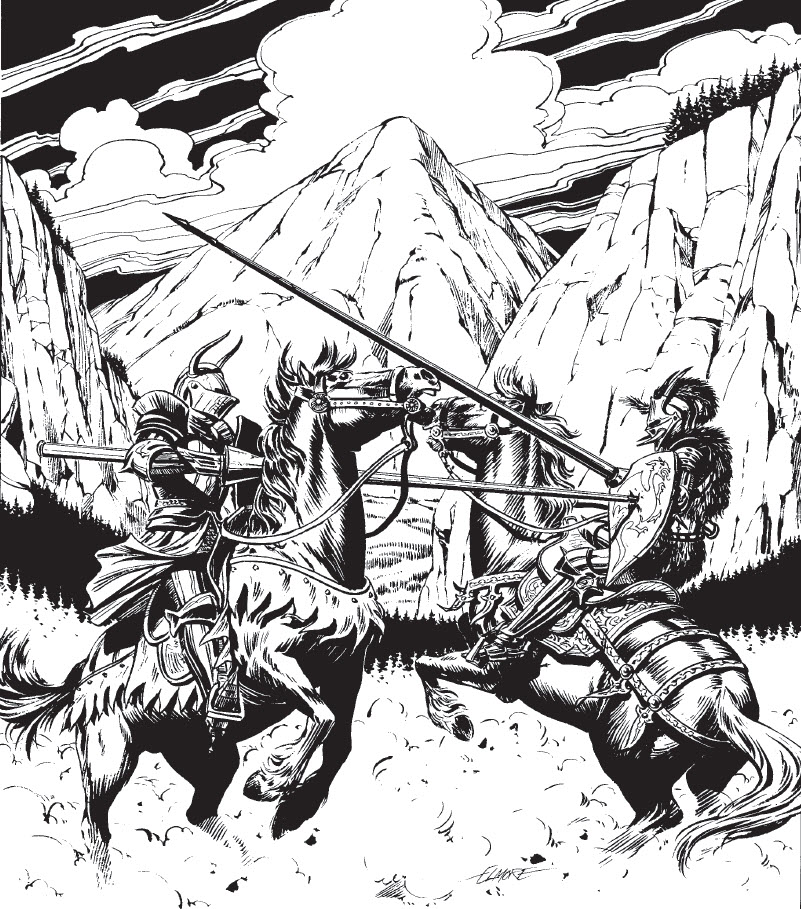
The Daily Connection: Praying for Spells
Like Wizards who must memorize spells, Clerics and Druids must establish a daily connection to their power source to receive their spells.
- Clerics pray to their chosen deity, beseeching them for divine favor and the granting of spells.
- Druids commune with the natural world, meditating amongst the trees, by flowing water, or under the open sky to receive the power of the elements and the spirits of nature.
The number of spells they can receive and the levels of those spells are determined by their character level. This represents the strength of their connection to their deity or to nature.
Casting and Remembering: The Flow of Divine Power
Once a Cleric or Druid has prayed (or communed) and received their spells for the day, they can cast those prepared spells. Similar to arcane magic, once a spell is cast, the energy is expended. To cast the same spell again, they must prepare it again during their next period of prayer or communion.
The Essence of Their Magic: Purpose and Flavor
The typical sphere access reinforces the distinct flavor of Clerical and Druidic magic:
- Clerical Magic: Tends towards healing injuries, protecting against harm, bolstering allies with divine favor, and sometimes directly intervening against evil forces. Their access to spheres like Healing and Protection highlights this.
- Druidic Magic: Focuses on the power of the natural world, commanding animals, manipulating the elements (earth, air, fire, water), healing through natural means, and influencing the growth and decay of plants. Their major access to the Animal, Elemental, and Plant spheres reflects this focus.
While the specifics of sphere access can vary slightly depending on a character's specific deity or druidic order (details found in the Player's Handbook), understanding the concept of spheres is crucial to grasping how divine magic functions in AD&D 2nd Edition. It's not just about spell levels, but also about the type of magic a divine caster can access based on their connection to higher powers or the natural world.
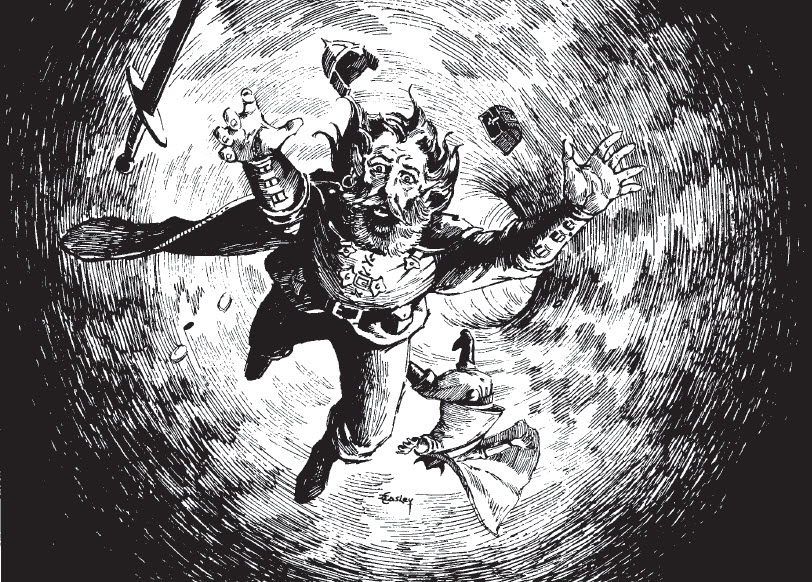
Spell Levels: A Hierarchy of Power
Spells are categorized into levels, ranging from level 1 (minor enchantments and simple effects) to level 9 (world-altering magic capable of reshaping reality). A caster's level determines the highest level of spells they can learn and cast, as well as the number of spell slots they have available at each level.
Spell Components: The Ingredients of Magic
Most spells in AD&D 2nd Edition require specific components to be cast:
- Verbal (V): Spoken words of power, often in an ancient or magical language.
- Somatic (S): Precise hand gestures and movements that channel magical energies.
- Material (M): Physical items, sometimes rare or exotic, that are manipulated or consumed during the casting of the spell.
A spellcaster must be able to provide all the required components to successfully cast a spell.
Magic in the Flow of Battle: Casting Time
Casting a spell is not instantaneous. Each spell has a listed casting time, often measured in segments within a combat round. A segment is a fraction of a round, and some spells can take multiple segments to complete. If a spellcaster takes damage before they finish casting a spell, their concentration can be broken, and the spell might be disrupted and fail.
Resisting the Unnatural: Saving Throws
When faced with dangerous effects, be it a dragon's fiery breath or a malevolent magical attack, characters have a chance to resist or mitigate the harm through saving throws. There are five primary types of saving throws:
- Paralyzation, Poison, or Death Magic: Resisting effects that can immobilize, inflict toxins, or cause instant death.
- Rod, Staff, or Wand: Resisting the effects of magical devices.
- Petrification or Polymorph: Resisting transformations into stone or other forms.
- Breath Weapon: Evading or lessening the damage from a creature's breath attack.
- Spell: Resisting the direct effects of magical spells.
To make a saving throw:
- Locate the appropriate saving throw value on your character sheet. These values are determined by your class and level.
- Roll a 1d20.
- If your roll is equal to or higher than the target number for that specific saving throw, you succeed!
Successful on a roll? Success usually means avoiding the effect entirely or taking reduced damage (often half).

The Path to Greater Power: Experience and Advancement
As your character overcomes challenges, defeats monsters, and completes quests, they earn experience points (XP). These points represent the knowledge and skills they've gained through their adventures. When your accumulated XP reaches a certain threshold, you advance to the next level in your chosen class. Leveling up brings a host of benefits:
- Improved THAC0: Your base chance to hit opponents gets better (your THAC0 number decreases).
- More Hit Points: You gain additional hit points, making you more resilient in combat.
- Improved Saving Throws: Your ability to resist dangerous effects increases.
- New Class Abilities: You unlock new skills and powers specific to your class. Fighters might gain additional attacks, wizards might learn higher-level spells, and thieves might become more adept at their roguish talents.
- More/Higher Spell Slots: Spellcasters gain access to more spell slots per day and eventually the ability to cast more powerful, higher-level spells.
Each class has its own experience point progression table, meaning some classes might advance in level faster or slower than others.

Beyond Swords and Spells: Non-Weapon Proficiencies
This optional but highly recommended system allows your character to develop skills beyond combat and magic, representing specialized training or natural talents. Characters receive a limited number of proficiency slots to allocate to various skills, such as:
- Tracking: Following trails and identifying creatures.
- Herbalism: Identifying and using plants for medicinal or other purposes.
- Blacksmithing: Crafting and repairing metal items.
- Reading/Writing: Literacy and the ability to decipher texts.
- Navigation: Guiding the party through wilderness or urban environments.
- Etiquette: Understanding and behaving appropriately in social situations.
- Blind-Fighting: The ability to fight effectively without sight.
- Animal Handling: Caring for and training animals.
To use a non-weapon proficiency:
- When attempting a task related to a proficiency, your DM will likely ask you to make a proficiency check.
- Roll a 1d20.
- If your roll is equal to or under your relevant ability score (which might be modified based on the difficulty of the task or your proficiency level), you generally succeed.
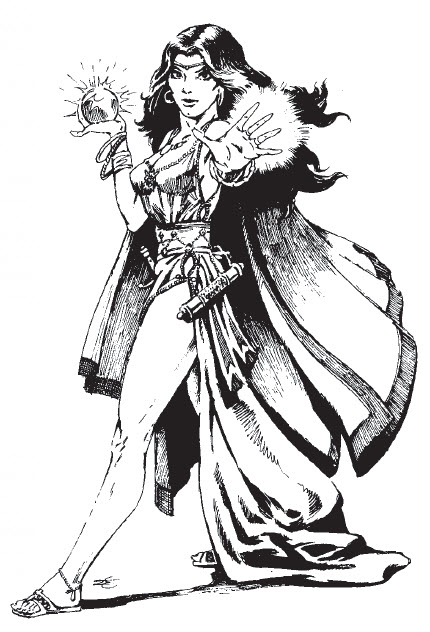
For example, if your character has the Tracking proficiency and a Wisdom score of 14, you would need to roll a 14 or lower on a d20 to successfully follow tracks in the forest (the DM might apply modifiers for difficult terrain or weather). Non-weapon proficiencies add depth and versatility to your character, allowing them to contribute to the party in numerous ways beyond direct combat.
A Glimpse into Adventure: Example of Play
Let's step into a brief moment of action to see how some of these mechanics come together:
DM: "The air grows heavy with the stench of decay as you enter the crypt. A lone goblin, its eyes gleaming with malice, leaps from behind a crumbling sarcophagus, brandishing a rusty short sword! Roll for initiative!"
Player (playing a Human Fighter named Borin): "My Dexterity is 12, so no modifier. I roll a... a 5!"
DM: "The goblin snarls and scrambles forward, rolling a 7. Borin, you are quicker! What do you do?"
Borin's Player: "I draw my long sword and attack!" rolls 1d20 "I got a 16. My Strength bonus is +1, so that's a 17. My THAC0 is 19. 19 minus 17 is 2. Does that hit the goblin?"
DM: "The goblin's Armor Class is 6, so yes, a 2 or lower hits! Your blade finds its mark. Roll for damage."
Borin's Player: rolls 1d8 for the long sword "I rolled an 8! Plus my Strength bonus of 1, that's 9 damage!"
DM: "With a sickening thud, your long sword bites deep into the goblin's chest. It lets out a strangled cry and collapses in a heap. Victory is yours!"
This simple exchange illustrates the flow of combat, the use of initiative, attack rolls, THAC0, Armor Class, and damage. As the adventure continues, saving throws, spells, and other abilities would come into play, creating a dynamic and unpredictable experience.
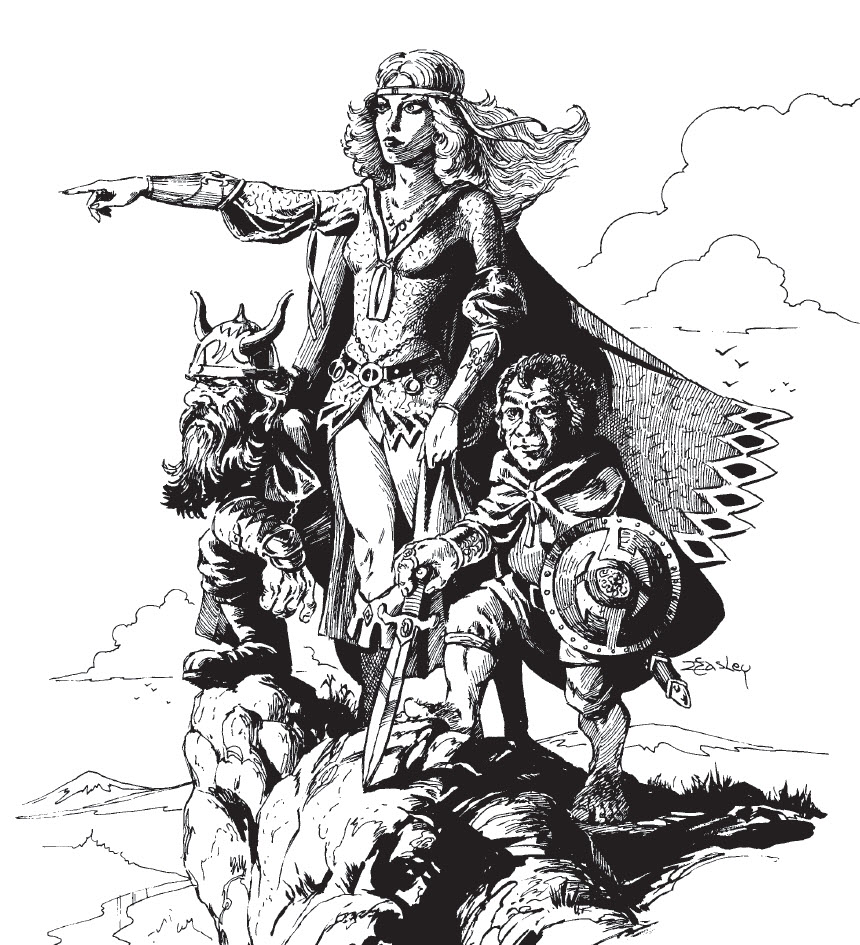
Tips for the Aspiring Adventurer:
- Start Simple: If you're new to AD&D 2nd Edition, consider playing a straightforward class like a fighter or a thief before tackling the complexities of spellcasters.
- Don't Be Afraid to Ask: There are many rules and nuances to learn. Don't hesitate to ask your Dungeon Master or more experienced players for clarification.
- Take Notes: Keep track of important non-player characters (NPCs), locations, clues, and quest details. Good note-taking can be invaluable.
- Embrace Teamwork: AD&D 2nd Edition thrives on collaboration. Different character classes bring unique strengths to the party. Work together, share your skills, and support each other.
- Let Your Imagination Soar: The rules provide a framework, but the most memorable moments in AD&D come from creative problem-solving and engaging role-playing. Don't be afraid to try unexpected solutions!
- Most Importantly: Have Fun! The goal of AD&D 2nd Edition is to create exciting stories and share enjoyable experiences with your friends.
The Adventure Awaits
Advanced Dungeons & Dragons 2nd Edition offers a rich and detailed world of fantasy adventure. While it might seem intricate at first glance, its depth allows for incredible storytelling, nuanced character development, and truly epic campaigns. The unique mechanics, like the infamous THAC0 and the descending Armor Class, are part of its enduring charm and represent a significant chapter in the history of role-playing games.
So gather your dice, sharpen your pencils, and prepare to immerse yourselves in a world of boundless possibilities. The realms of AD&D 2nd Edition await your heroic deeds!
This primer provides a solid foundation, but the full AD&D 2nd Edition system is vast and contains a wealth of additional details, options, and intricacies. For the complete rules and a deeper understanding of the game, be sure to consult the Player's Handbook, Dungeon Master's Guide, and Monster Manual. Now, go forth and forge your legends!
